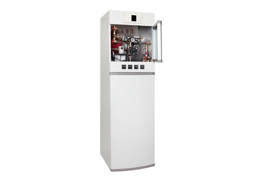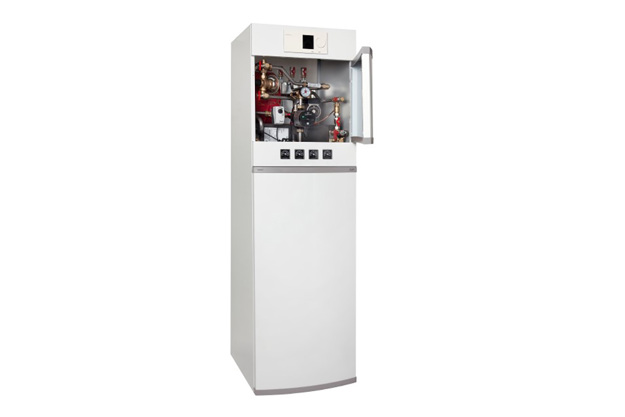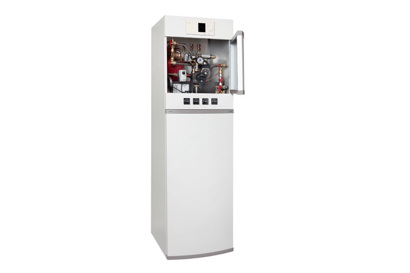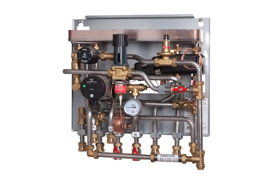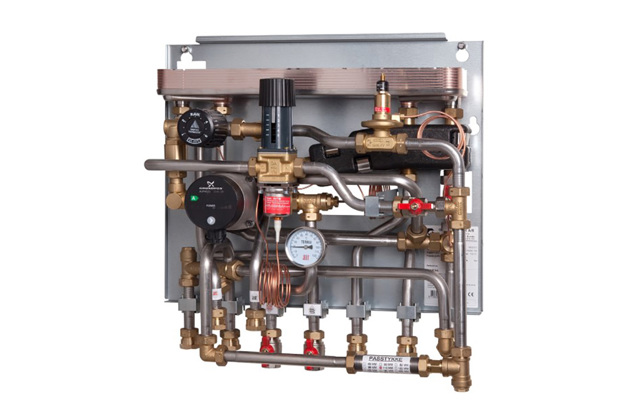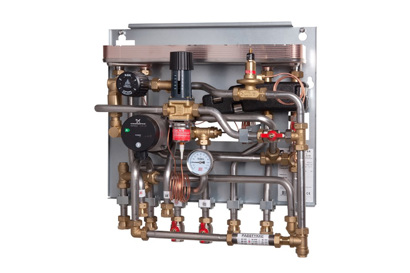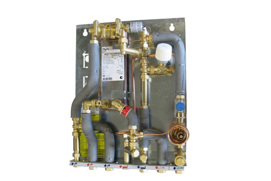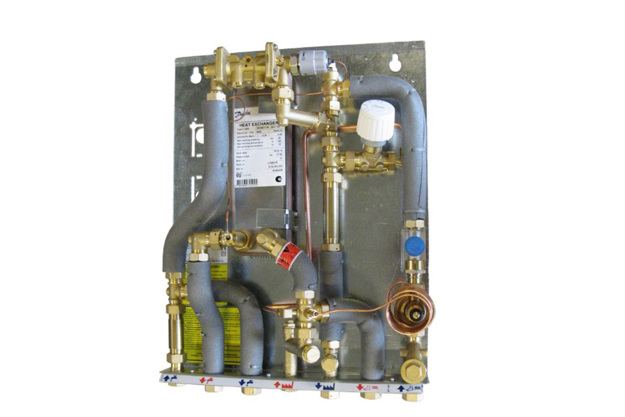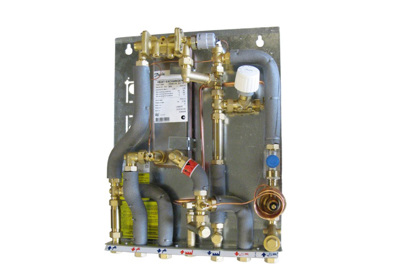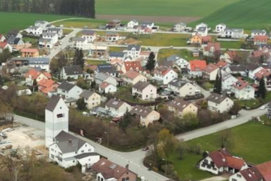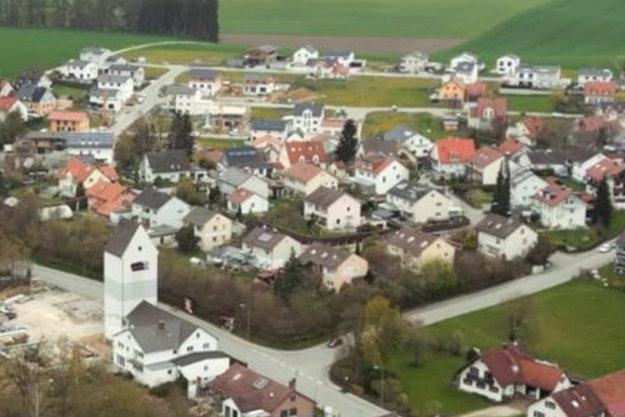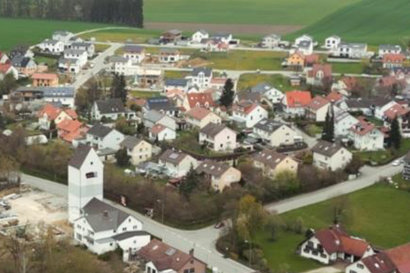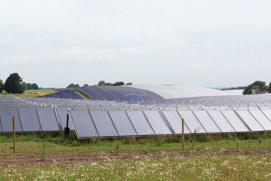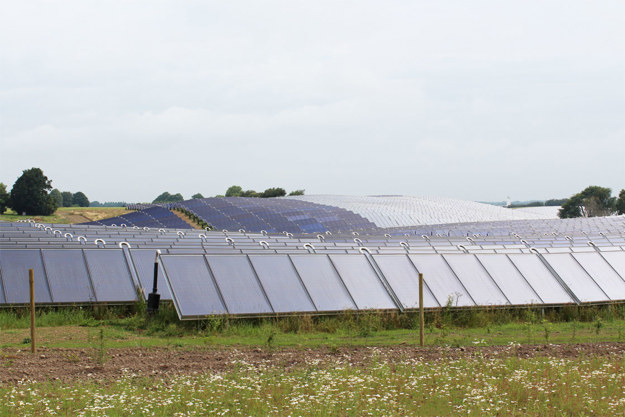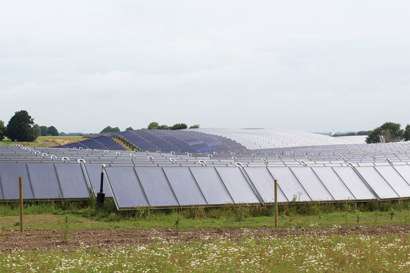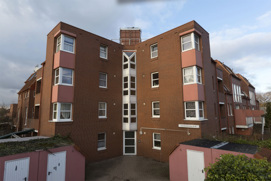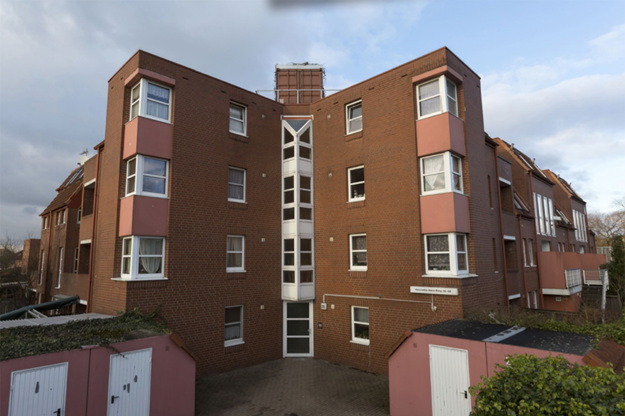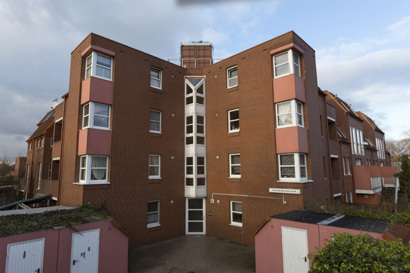Conventional heating systems in single-family houses and apartment buildings consist of a central heat source and central DHW production. Today, renovated or new buildings are obliged to make at least partial use of renewable energy sources. All buildings must comply with strict DHW hygiene regulations.
In nearly all cases, it makes financial sense to heat multiple apartments, buildings or houses via a central system rather than individually. Modern central heating systems can use buffer tanks to combine different energy sources.
Buildings with decentralized DHW production need only three rather than the usual five supply lines to provide hygienically safe drinking water. If the volume of water held between the water heater and the taps is less than 3 liters, no regular hygienic testing is required.
Each building and apartment has a directly connected substation or flat station with integrated production of domestic hot water. Single or multiple heating circuits (e.g. radiator, floor heating system) are supplied with heated water from the central heat source.
Features and benefits
Domestic hot water is produced on demand, without storing
Heating systems can combine different energy sources
Product range
-
if (isSmallPicture) {


 Indirect or direct heating and domestic hot water cylinder
Indirect or direct heating and domestic hot water cylinderSubstations for indirect heating have a heat exchanger separating the primary flow from the secondary flow. Indirect substations are recommended for PN16 networks and higher pressure classes. Substations for direct heating have no heat exchanger separating the primary flow from the secondary flow and are recommended for maximum PN10 or PN6 networks. The domestic hot water is heated in a cylinder by the district heating water flow in a coil within the cylinder.
-
if (isSmallPicture) {


 Direct heating with mixing loop and domestic hot water
Direct heating with mixing loop and domestic hot waterSubstations for direct heating have no heat exchanger separating the primary flow from the secondary flow. Therefore the supply from the network or the central oil-/gas boiler will flow directly into the network in each flat. Direct substations are recommended for maximum PN10 or PN6 networks.
-
if (isSmallPicture) {


 Direct heating and domestic hot water
Direct heating and domestic hot waterSubstations for direct heating have no heat exchanger separating the primary flow from the secondary flow. Therefore the supply from the network or the central oil-/gas boiler will flow directly into the network in each flat. Direct substations are recommended for maximum PN10 or PN6 networks.
Documents
| Type | Name | Language | Valid for | Updated | Download | File type |
|---|---|---|---|---|---|---|
| Brochure | Specifying the right district heating substation makes commercial sense | Ukrainian | Ukraine | 18 Sep, 2015 | 2.2 MB | |
| Brochure | Specifying the right district heating substation makes commercial sense | Slovenian | Slovenia | 21 Jul, 2015 | 5.2 MB | |
| Brochure | Specifying the right district heating substation makes commercial sense | Slovak | Slovakia | 21 Jul, 2015 | 2.4 MB | |
| Brochure | Specifying the right district heating substation makes commercial sense | German | Multiple | 16 Mar, 2020 | 3.1 MB | |
| Brochure | Specifying the right district heating substation makes commercial sense | Croatian | Croatia | 06 Aug, 2015 | 2.5 MB | |
| Brochure | Specifying the right district heating substation makes commercial sense | Bulgarian | Bulgaria | 31 Jul, 2015 | 11.3 MB | |
| Brochure | Specifying the right district heating substation makes commercial sense | English | Multiple | 05 Mar, 2015 | 2.4 MB | |
| Brochure | Specifying the right district heating substation makes commercial sense | Romanian, Moldavian, Moldovan | Romania | 29 Aug, 2015 | 2.3 MB |
Tools and apps
Case studies
-
if (isSmallPicture) {


 Successful transition from oil boilers to a local heating network in Eurasburg
Successful transition from oil boilers to a local heating network in EurasburgIn the Wittelsbacher Land near Augsburg the local network in Eurasburg supplies heat to 80 buildings using a wood chip heating system. Danfoss’ substations ensure efficient heating in all building types, and its modern SCADA solution enables remote system monitoring and management.
-
if (isSmallPicture) {


 Solar heating plant reduces CO2 emissions by 15,700 tonnes annually
Solar heating plant reduces CO2 emissions by 15,700 tonnes annuallyThe world’s largest solar heating plant in Silkeborg, Denmark harnesses energy to heat the homes and workplaces of 40,000 citizens. It supplies 18-20% of the annual heat consumption in the city of Silkeborg, Denmark, which has an ambitious target of CO2 neutrality in heat production by the year 2030.
-
if (isSmallPicture) {


 Flat stations in apartment building in Hamburg, Germany
Flat stations in apartment building in Hamburg, GermanyVisitors to Hamburg’s Henriette-Herz-Ring who let their gaze drift upward will discover two shipping containers on the roof of the apartment building. They are the visible result of an innovative planning initiative to replace inefficient gas boilers with Danfoss flat stations. The highlight of this renovation: residents did not have to vacate their apartments.

